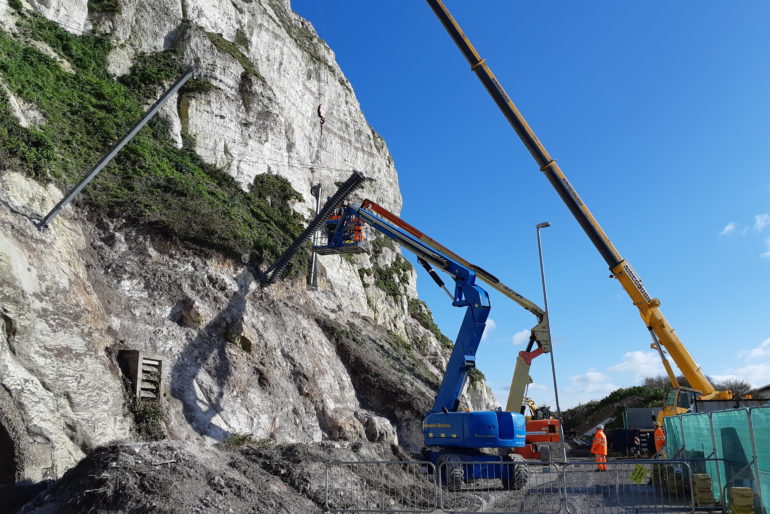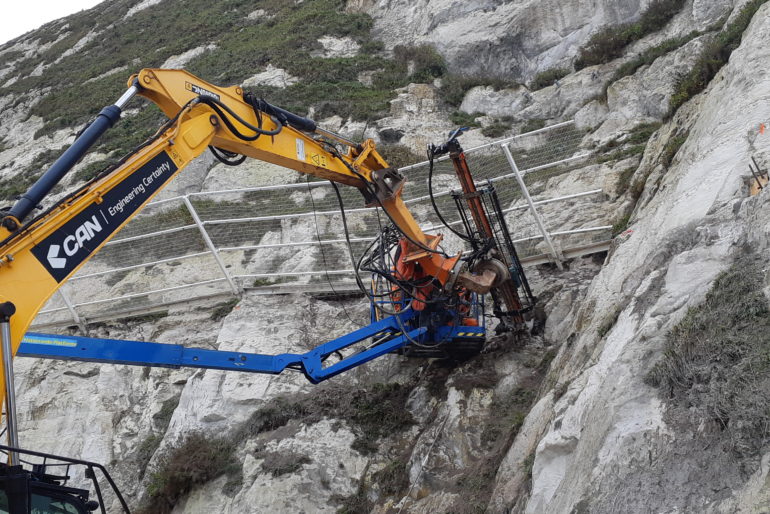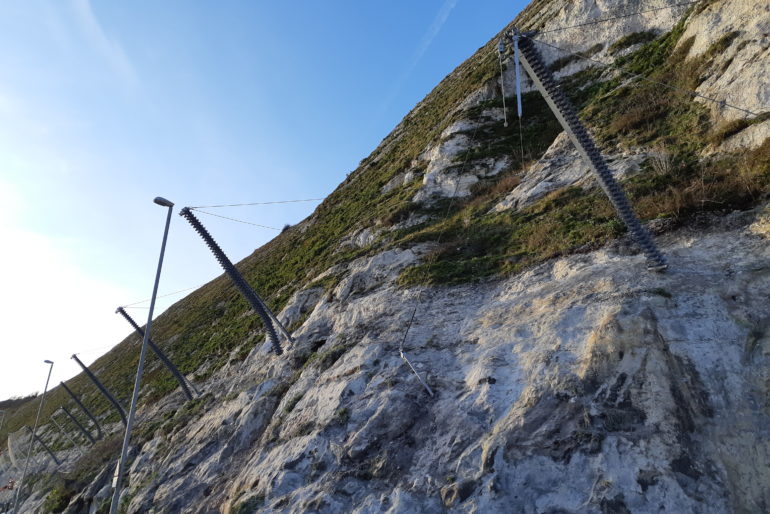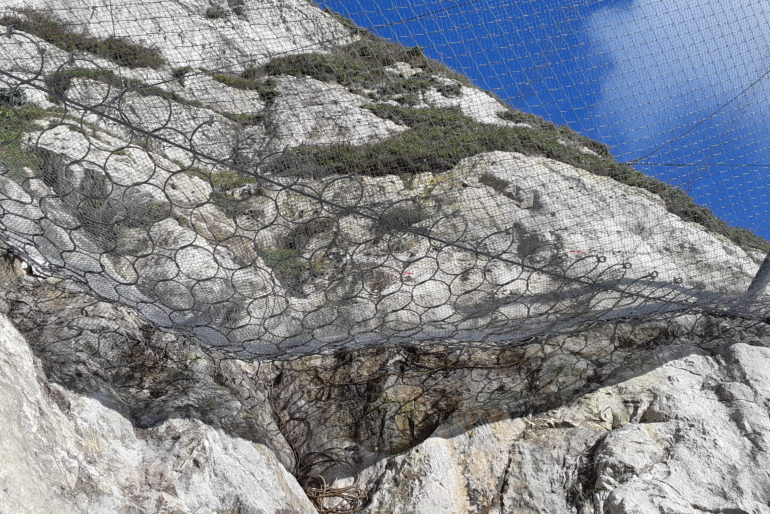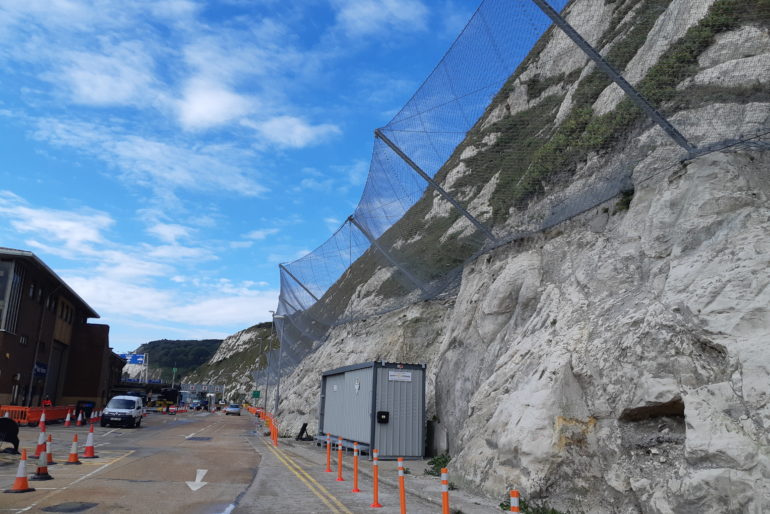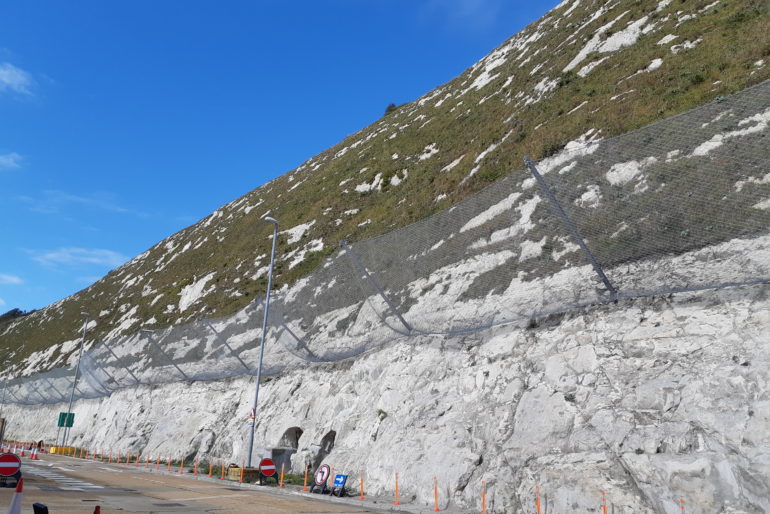Design of a high-energy flexible rockfall containment barrier to protect the Port from rockfall hazard below the White Cliffs of Dover.
Jubb were appointed by the Port of Dover to design a high energy flexible rockfall containment barrier to protect their technical services department from rockfall hazard. The port is located below the iconic White Cliffs of Dover and is one of the primary ferry terminals linking the continent and UK.
The work had been identified by Jubb’s annual cliff inspections, which assess the risk of rockfall over the length of the port’s estate. A bespoke Rockfall Hazard Index (RFHI) has been developed by Jubb, and this provided a semi-quantitative assessment of the relative risk of rockfall. An upgrade to an existing containment barrier was identified and this was prioritised due to the proximity of the technical service department’s yard area to a section of very steep and high chalk cliff.
The Port of Dover are progressively upgrading their existing rockfall containment systems, as they approach the end of their useful service life. A programme of annual maintenance is also carried out and this includes scaling work to remove loose rock, maintenance and repairs to existing stabilisation and rockfall containment systems. These include conventional hexagonal wire ‘drape’ netting, historic rigid rockfall containment fences and rock bolts.
A desk study report and options appraisal were completed prior to a feasibility study, cost planning and finally, the detailed design of the containment barrier.
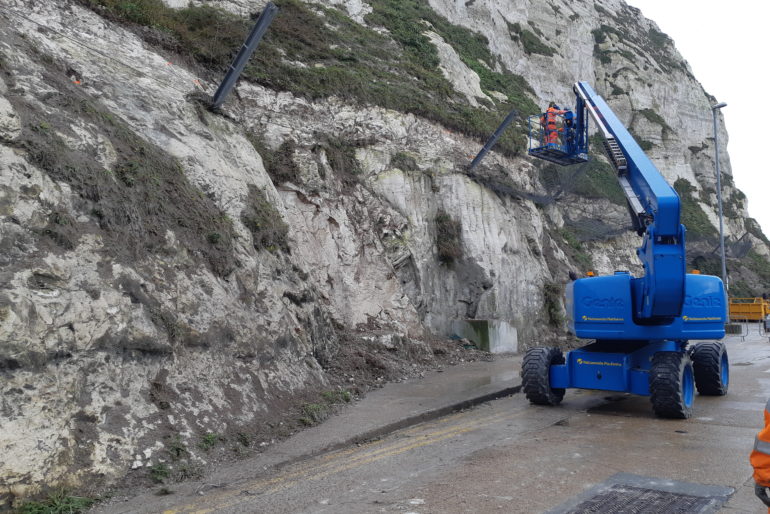 1 / 7Old Fence Removal
1 / 7Old Fence Removal 2 / 7Crane Lift of Upper Posts
2 / 7Crane Lift of Upper Posts 3 / 7Drilling Gully Anchors
3 / 7Drilling Gully Anchors 4 / 7Posts Prior to Mesh Install
4 / 7Posts Prior to Mesh Install 5 / 7Gully Ring Mesh Nets
5 / 7Gully Ring Mesh Nets 6 / 7Completed Fence
6 / 7Completed Fence 7 / 7Completed Fence
7 / 7Completed Fence
Specialist rockfall simulation software was employed, and a probabilistic approach used to determine the likely frequency, height and impact energy of a variety of rockfall scenarios. A 500-kJ flexible containment barrier, 5 m high, was specified. The detailed design included specifying the foundations to barrier posts, micro-piles and upslope anchorages. The barrier design itself and components are specified by the manufacturer, who employ 1:1 field scale testing at a research facility in Switzerland.
Several shallow gully features were identified during the site survey phase and the design included special sections of ring netting that was used to profile the base of the barrier to ensure that rolling blocks could not escape. Both the main barrier mesh and ring netting where lined with a secondary netting intended to catch smaller fragments of rock, which are a feature of chalk cliffs.
Rockfall containment barriers are designed to deform during impact and this extension dissipates the high impact energy. The forces generated are distributed via high tensile netting into boundary cables, through breaking mechanisms and then to ground anchors.
The construction phase was completed over the 2019 to 20 winter period to avoid the bird nesting season and the barrier was put into service during the spring of 2020.
